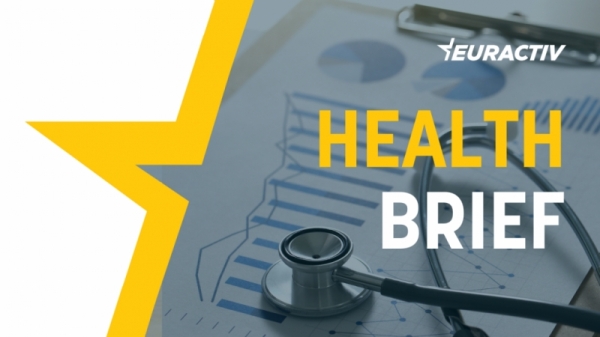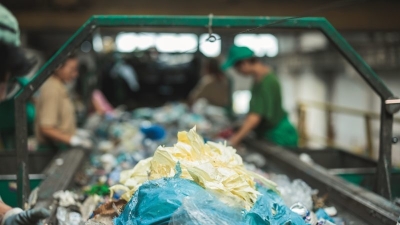Clash of ambitions in the asbestos fight

Lawmakers in the European Parliament keep calling for stepping up workers’ protection from asbestos, despite a more cautious approach from the EU executive and member states.
Asbestos – a group of six naturally occurring minerals – is harmful because of its thin, microscopic fibres that can be easily inhaled.
This can lead to lung cancer, laryngeal and ovarian cancer, and also mesothelioma, while ingesting water containing such fibres increases the risk of gastric and colorectal cancers.
Evidence suggests that asbestos was discovered and utilised in Cyprus, perhaps as far back as 5,000 years ago, for manufacturing cremation cloths, lamp wicks, hats, and shoes.
The harmfulness of the mineral was already documented by Romans, who described slave miners using a membrane from the bladder of a goat as an early respirator for protection against asbestos fibres.
Scientific evidence showing a causal relation between asbestos and carcinogenic effects in exposed individuals came in the 1960s.
Following this, in the 1990s, global asbestos consumption decreased by half, from four million metric tons in 1990 to two million metric tons in 1999.
Luckily for Europeans, a phase-out from asbestos was launched at the EU level in 1983, with a complete ban on all forms of asbestos in place in all member states by 1 January 2005.
Push from European Parliament
However, more than 15 years after its prohibition at the EU level, workers, especially in the construction sector, are still exposed to asbestos.
Exposure to the toxic mineral is still the leading cause of work-related cancers – as much as 78% of occupational cancers recognised in the member states are related to asbestos.
As of 2018, 125 million people worldwide have been exposed to asbestos in the workplace while the number of annual asbestos-related deaths in the EU and the UK reached more than 90,000 in 2019.
At the same time, the renovation wave that is part of the European Green Deal aims to revamp 35 million inefficient buildings by 2030, offering an opportunity to remove asbestos.
In October 2021, the European Parliament already adopted a resolution calling on Commission to, among other actions, update the asbestos at work directive.
Back then, the European Federation of Buildings and Woodworkers (EFBWW) general secretary Tom Deleu welcomed the resolution and said that Commission should follow in parliament’s footsteps as “anything less than this will be unacceptable and an offence to workers and citizens’ confidence in the EU”.
The Commission’s proposal for the directive designed to protect workers from cancer-causing asbestos came in September last year.
But it was not satisfying for the parliamentarians. “Its proposal fell short of our expectations,” the socialist political group said in their press release on 26 April.
Ten times higher or ten times lower?
The Commission proposed a reduction in the exposure limit of asbestos at work to 10 times lower than the current value – from 0.1 fibres per cubic centimetre (f/cm³) to 0.01 f/cm³.
But for the European Parliament’s employment committee (EMPL), this is not enough.
Lawmakers unanimously adopted a report with amendments calling to reduce the exposure limit of asbestos to 0.001 fibres/cm³, after a transitional period of 4 years.
The limit proposed by the Commission – and so far accepted by EU member states – is ten times higher than Parliament’s target.
“Their ambition is ten times lower,” the socialist group pointed out.
Parliament’s rapporteur on the file, the French liberal Véronique Trillet-Lenoir, called the adoption of her report “a major step in the EU cancer plan”.
MEPs propose a transition period to allow member states to equip themselves with more efficient detection methods based on electron microscopy.
At the moment, the occupational exposure level is still measurable with optical microscopes used in the majority of member states.
“Faced with a carcinogen with no zero-risk level, focusing on a threshold is unfortunately not enough,” Trillet-Lenoir said in a press release.
The report calls for important safety measures, ranging from mandatory asbestos screening before work to better assess risks, to decontamination procedures to prevent secondary exposure, to provisions aimed at minimizing worker exposure on construction sites.
Danish MEP Nikolaj Villumsen, who is the Left Group’s shadow rapporteur on the file, called the Parliament’s vote “a clear victory in the protection of all of those Europeans who may be exposed to asbestos via their work, from construction workers to firefighters”.
Talks promise to be tough
The upcoming interinstitutional talks with the Council representing the 27 national governments, aimed at finding a joint set of amendments to the Commission’s proposal, might be tough for the Parliament.
Indeed, EU ministers of employment set out their position already in early December last year, agreeing that the current exposure levels of asbestos should be lowered based on the Commission’s proposal.
Ministers also agreed that asbestos fibre-counting should be carried out on the basis of a more modern method.
“EU member states must drastically limit workers’ exposure to the danger of asbestos and I am glad they are ready to do so,” Marian Jurečka, Czech deputy prime minister and minister of labour, said back then.
But for Villumsen, the Parliament has to keep a strong position.
“Sadly, we know that some member states are satisfied with a limit value 10 times as high as what we propose, with outdated methods of measuring and less stringent approaches to training and certification. This is what we will be up against next.”
This week’s podcast

Unwrapping the new pharmacetucial legislation
This week, EURACTIV’s health team dives into the proposal for a new pharmaceutical legislation and the complicated way ahead. For that, they talk with stakeholders working on health policy at the EU level about their priorities and main concerns.
Pharmaceutical package. The European Commission presented the eagerly-awaited pharmaceutical package on Wednesday (26 April) designed to ensure that all EU patients have timely and equitable access to safe and effective medicines while at the same time boosting the attractiveness of the EU pharmaceutical industry.
The proposal was summarised as pursuing two sets of objectives: the three As – making medicines more available, accessible, and affordable – and the three Cs – maintaining the competitiveness of the EU pharma industry, ensuring medicines compliance with the Green Deal, and combating antimicrobial resilience.
EURACTIV’s health team looked at different components of the proposal, such as:
- regulatory incentives for the industry to improve patient access to new drugs.
- system of incentives to promote the development of new antimicrobials.
- addressing drug shortages.
- simplifying the regulatory framework medicines.
Health ministers meet up. Health ministers are having an informal meeting in Stockholm on 4-5 May to discuss access to medicinal products and how the EU can secure access to medicinal products – both new and existing stock – in daily work in non-crisis times. “The issue of medicinal product shortages has been a challenge for a long time and was further accentuated during the pandemic,” said the Swedish minister for healthcare, Acko Ankarberg Johansson, who will be hosting the meeting. Find the agenda and meeting details here.
Sharing health data. A survey by the European consumer organisation BEUC on sharing medical data across eight European countries showed that people are selective about the health data they are willing to share. While around 60% are willing to share their health status such as allergies for care purposes, a large majority do not want to share data related to their health habits, genetic data or sexual and reproductive health data.
Moreover, the willingness to share health data with an entity strongly mirrors the level of trust they place in them. While nearly 90% are willing to share their data with their general practitioners, fewer than 10% are eager to share their data with insurance or wellness app companies. Only 5% are willing to share their health data with digital technology companies. Around 80% of people prefer to choose what personal data they give access to, who they give access to, and for what purposes. Yet only around 20% have currently limited access to some professionals to their health data.
Monique Goyens, director general at BEUC, said the results should be “a reality check to the EU” as the European Health Data Space (EHDS) is being built.
“While the European Health Data Space is well-intentioned, setting it up should not come at the detriment of people’s protection and preferences regarding how much they want to share, with whom and for what purpose,” she said.
Health systems on recovery from pandemic. Health systems in countries have started showing the first major signs of health system recovery following three years of the COVID-19 pandemic, according to a World Health Organisation report on the continuity of essential health services during the COVID-19 pandemic published on 1 May (Monday).
“It is welcome news that health systems in the majority of countries are starting to restore essential health services for millions of people who missed them during the pandemic,” in the press release on Tuesday (2 May) said Rudi Eggers, WHO director for integrated health services.
Respondent countries reported continued disruptions in almost one-quarter of services on average. In 84 countries where trend analysis is possible, the percentage of disrupted services declined on average from 56% in July-September 2020 to 23% in November 2022- January 2023.
Preparing for future pandemics. On Wednesday (26 April), WHO launched the new Preparedness and Resilience for Emerging Threats Initiative (PRET) to improve pandemic preparedness. It provides guidance on integrated planning for responding to any respiratory pathogen such as influenza or coronaviruses. Through the initiative, WHO will use a mode of transmission approach to guide countries in pandemic planning, given that many capacities and capabilities are common among groups of pathogens.
PARIS
France to fully reimburse wheelchairs from 2024, Macron says. Wheelchairs will be fully reimbursed in France from next year, President Emmanuel Macron, who presided over the sixth annual national disability conference at the Elysée Palace, said on Wednesday while presenting his government’s policy to improve the rights of persons with disabilities. By Clara Bauer-Babef | EURACTIV.fr
TIRANA
HIV cases on the rise in Albania. The number of people diagnosed with HIV and AIDS is increasing in Albania, with eight cases diagnosed since the beginning of 2023, showing a year-on-year rise. By Alice Taylor | Exit.al
HELSINKI
Finland sees rise in COVID-19 cases. The number of infections and the number of patients in hospitals’ intensive care units across the country have been on the rise for the past three weeks. By Pekka Vanttinen | EURACTIV.com
SOFIA
Bulgaria’s rural hospitals hit hardest by decreasing number of nurses. The uneven distribution of health care personnel is becoming a problem as the decreasing number of nurses in Bulgarian health care is hitting hospitals in smaller towns hardest, macroeconomist Arkadiy Sharkov, an expert in the field of healthcare economics, told EURACTIV. By Emiliya Milcheva and Krassen Nikolov | EURACTIV.bg
2-4 May | Workshop on Achieving Quality and Sustainable Local Vaccine Production in Africa to Improve Access
2-4 May | Meeting of EU national drug coordinators
4-5 May | Informal meeting of health ministers
4 May |Meeting of the Emergency Committee for COVID-19, convened by the WHO Director-General under the International Health Regulations (IHR 2005)
5 May | World Hand Hygiene Day
9 May | The WHO AWaRe Antibiotic Book: What it is and how to use it.
12-13 May |EASL Monothematic Conference on Biliary Fibrosis in Florence, Italy.
Read more with EURACTIV




